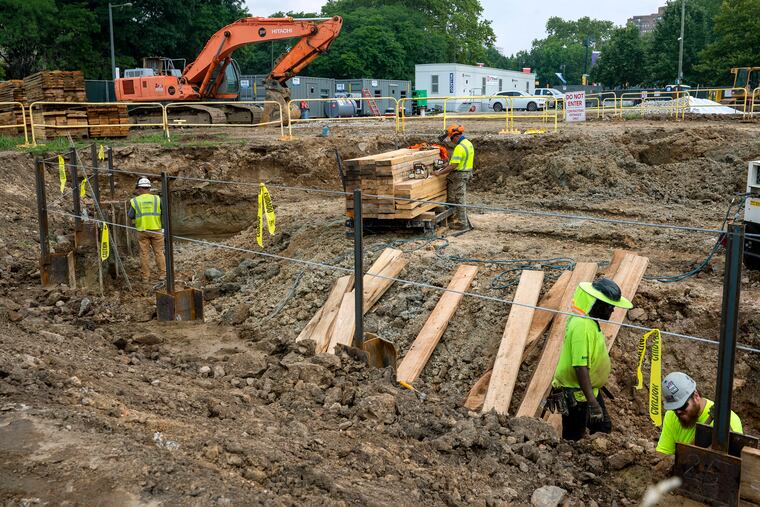Calder Gardens, a new museum dedicated to one of Philadelphia’s most famous artists, is finally underway
Overcoming obstacles, that include a water main, the new museum and its sanctuary-like gardens are expected to be complete by late 2024 or early 2025.

Calder Gardens, the long-awaited showcase for the art of native son Alexander Calder, is finally moving toward reality.
The new museum will be located on Center City’s Benjamin Franklin Parkway, between 21st and 22nd Streets across from the Barnes Foundation and near several of the city’s major cultural institutions.
Construction began in earnest on the $70 million project last month, after completing all the necessary city permit processes, according to spokesperson Timothy Spreitzer, as well as some additional site work.
Joseph Neubauer, chairman of the Neubauer Family Foundation which provided lead funding for the project, and who was present at Calder Gardens’ November 2022 groundbreaking, seemed quite pleased it is moving ahead.
“Calder Gardens marks a significant step toward realizing a long-held vision to not only create a permanent home for Calder’s artistic contributions in his birth city but also to add yet one more jewel to the already culturally rich Parkway.” he said.
But major projects often encounter obstacles. Calder Gardens was no exception.
During the planning and design phases of the project, a water main was discovered on the site in February 2021, according to Spreitzer. After considering various options, it was decided to relocate the water main. The work was done from October to December 2022.
In addition, “significant flood-proofing measures were added to the design, shortly after Hurricane Ida-related flooding in 2021,” the spokesperson added.
Both design revisions were important, especially since the museum is built into the earth, not just on top of it.
In addition to accommodating a rotating array of Calder’s iconic mobiles, stabiles (self-supporting, static sculptures), monumental sculptures, and paintings from the Calder Foundation in New York City, the garden itself is expected to be notable. Acclaimed landscape architect Piet Oudolf will be the creative force behind it.
The building was designed by Herzog & de Meuron, the firm responsible for London’s Tate Modern.
The idea of a Calder museum has had support since the late 1990s, even financial backing. But the project seemed to be going nowhere for many years until Neubauer and fellow philanthropist and Calder Gardens benefactor H. F. “Gerry” Lenfest spoke, shortly before Lenfest died in 2018.
“Just get it done” is what Lenfest, a former owner of The Inquirer and whose Lenfest Institute still supports the company, said when they spoke about Calder Gardens. Neubauer went about trying to do just that.
The total project cost including endowment is still $70 million; the cost of relocating the water main was covered by an anonymous donor, Spreitzer said. He declined to name that amount.
So far, the project is on schedule, and is to open in late 2024 or early 2025.
When Calder Gardens is complete, its supporters say it will add to Philadelphia’s reputation as a cultural destination and also honor the Calder family’s sizable artistic legacy in the city.
Calder’s grandfather, sculptor Alexander Milne Calder, immigrated to Philadelphia from Scotland in 1868 and went on to create the statue of William Penn atop Philadelphia City Hall. Calder’s father, Alexander Stirling Calder, codesigned and created the Swann Memorial Fountain, the centerpiece of Logan Square.